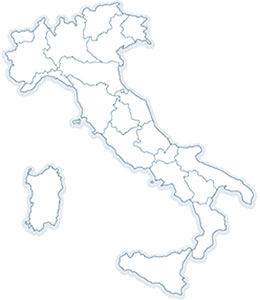Itinerary: Cocullo, Sulmona, Pacentro, Pescocostanzo, Castel di Sangro, Cocullo
The Medieval villages in the National Park of Abruzzo
This tour destination is the National Park of Abruzzo with its breathtaking views and the architectural beauties of the Medieval villages located here.
It kicks off from the ancient fortified town of Cocullo (pic n°3), nestled in the amazing scenery of the enchanting natural gorges called Gole del Sagittario (Gorges of Sagittarius).
This village is called the "land of snakes" because, according to the tradition, the worship of reptiles was widespread here to honor Angizia, who probably was the Goddess of healing. Every year on Labor Day, the village comes alive to celebrate its saint protector, and the celebrations culminate in "Festa dei Serpari". Many pilgrims come from Lazio, Molise, and Campania to watch the procession of the saint along the streets of the village, where its statue is carried by four men and accompanied by two girls wearing traditional costumes while the "serpari" (snake hunters) cover the statue of snakes. You can find out many other details about this tradition in the local Museo dei Serpari.
Then continue through the National Park of Abruzzo until you get to Sulmona (pic n°2). Birthplace of Ovid, Sulmone is a nice town that houses some Medieval architectural wonders, such as the imposing Cathedral of San Panfilo, Palazzo della Santissima Annunziata, the Civic Museum, and Piazza Garibaldi. The visit to this town cannot be complete if you do not taste what is likely to be one of the best delicacies of the area: the famous confetti di Sulmona, known all over the world.
The road that leads you out of Sulmona is just the prelude of the beautiful scenic road you will drive on soon until you will reach Pacentro (pic n°1). This Medieval small village in the area of Majella National Park is considered one of the most beautiful villages in Italy. It has been inhabited since prehistoric times, as evidenced by red-ocher cave paintings found in the area.
The next stop is Pescocostanzo, considered as a remarkable example of mountain architecture. Among the main attractions of this town, we can mention the splendid Church of Santa Maria del Colle, the small church of Santa Maria del Carmine, and the Museum of Tombolo (bobbin lace), dedicated to this particular artifact that is very common in these areas.
Roccaraso (pic n°4) is just a few kilometers away. It is the main ski resort of Abruzzo and one of the main tourist destinations in the Italian Apennines. From here, you can easily get to the nearby Castel di Sangro. The village is worth a visit since here you can admire the picturesque Piazza del Plebiscito, the true heart of Castel di Sangro with an 1898 fountain in its center overlooked by the Church of St. John the Baptist, which houses the relics of St. Felix.
Leaving Castel di Sangro behind, continue your exploration of the beautiful Abruzzo countryside. You will enter the heart of the National Park of Abruzzo and reach Barrea (pic n°6). This village has a distinctive ancient part that has preserved the old urban layout and it is still enclosed by walls.
Just a few more kilometers will lead you to Scanno (pic n°5). Entering the front gate of the ancient area of this village, you will have the feeling as if you were back in the Middle Ages.
Departure: Cocullo
Arrival: Cocullo
Length: Km 165
Some pictures of Verona:
Pacentro (pic n°1); Sulmona (pic n°2); Cocullo (pic n°3); Roccaraso (pic n°4); Scanno (pic n°5); Barrea (pic n°6)












